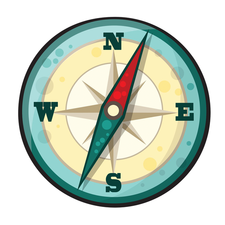Source code browsers
Navigators

© Lead Image © alexandragl, 123RF.com
If you've ever struggled to get a sense of someone else's code, the right tool could save you hours of grepping.
Open source is all about code. Contributors read tons of code, of which they have written only a small fraction. Being able to comprehend a program is crucial to the contribution process, and free software is all about contribution. In other words, you need tools to read and understand code.
These tools are called "source code browsers" or "source navigators." Linux has many of them, and normally they fall in two large categories. Older ones implement their own (simplified) parsers to recognize language symbols, such as function definitions, and record their location in the source code. This works fast and reasonably well, yet most programming languages have complex grammar that simplified parsers can't fully embrace. Newer browsers rely on the tool set to build an abstract syntax tree (AST) [1]. This makes indexing more precise, but also slower and more cumbersome to generate. Choosing one approach over another depends on the situation, and I hope this text provides you with some guidance.
Ubiquitous Ctags
Ctags is the de facto standard for source code indexers in Linux. As the name suggests, it builds on the "tag" concept. Put simply, a tag is a syntax construct that has an index entry, such as a class, function, or macro definition. This index comes in a so-called "tags" file, and the main purpose of the non-interactive ctags command is to generate tags files from source-code trees. Tags files have a well-defined format, and virtually all code editors in Linux understand it.
[...]
Buy this article as PDF
(incl. VAT)
Buy Linux Magazine
Subscribe to our Linux Newsletters
Find Linux and Open Source Jobs
Subscribe to our ADMIN Newsletters
Support Our Work
Linux Magazine content is made possible with support from readers like you. Please consider contributing when you’ve found an article to be beneficial.

News
-
Parrot OS Switches to KDE Plasma Desktop
Yet another distro is making the move to the KDE Plasma desktop.
-
TUXEDO Announces Gemini 17
TUXEDO Computers has released the fourth generation of its Gemini laptop with plenty of updates.
-
Two New Distros Adopt Enlightenment
MX Moksha and AV Linux 25 join ranks with Bodhi Linux and embrace the Enlightenment desktop.
-
Solus Linux 4.8 Removes Python 2
Solus Linux 4.8 has been released with the latest Linux kernel, updated desktops, and a key removal.
-
Zorin OS 18 Hits over a Million Downloads
If you doubt Linux isn't gaining popularity, you only have to look at Zorin OS's download numbers.
-
TUXEDO Computers Scraps Snapdragon X1E-Based Laptop
Due to issues with a Snapdragon CPU, TUXEDO Computers has cancelled its plans to release a laptop based on this elite hardware.
-
Debian Unleashes Debian Libre Live
Debian Libre Live keeps your machine free of proprietary software.
-
Valve Announces Pending Release of Steam Machine
Shout it to the heavens: Steam Machine, powered by Linux, is set to arrive in 2026.
-
Happy Birthday, ADMIN Magazine!
ADMIN is celebrating its 15th anniversary with issue #90.
-
Another Linux Malware Discovered
Russian hackers use Hyper-V to hide malware within Linux virtual machines.

